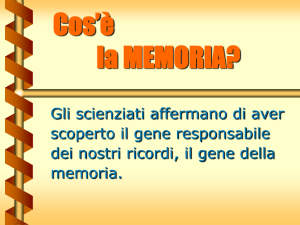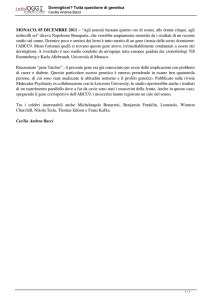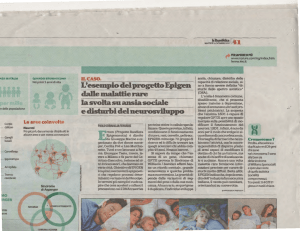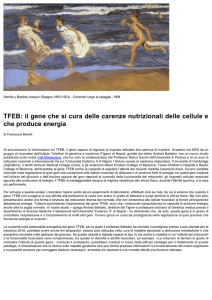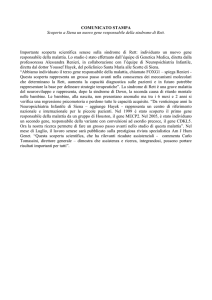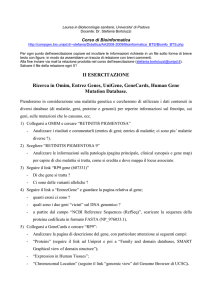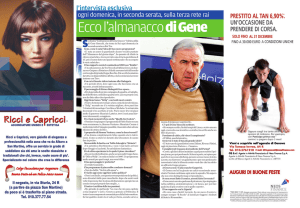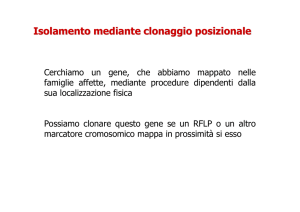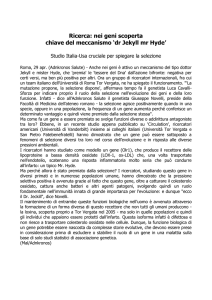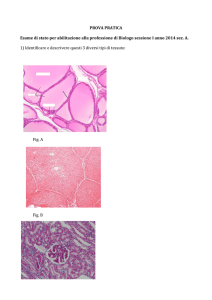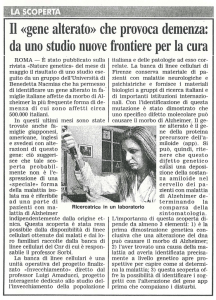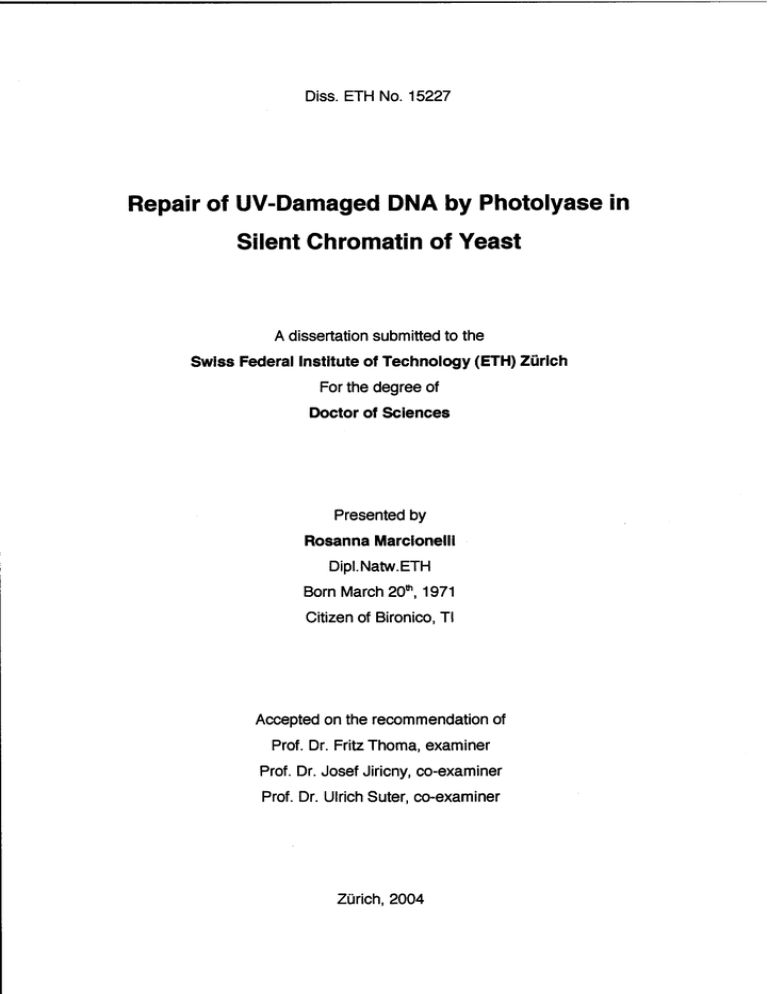
Diss. ETH No. 15227
Repair of UV-Damaged DNA by Photolyase in
Silent Chromatin of Yeast
A dissertation submitted to the
Swlss Federallnstltute of Technology (ETH) Zürich
For the degree of
Doctor of Sclences
Presented by
Rosanna Marclonelll
DipI.Natw.ETH
Born March 2011\ 1971
Citizen of Bironico, TI
Accepted on the recommendation of
Prof. Dr. Fritz Thoma, examiner
Prof. Dr. Josef Jiricny, co-examiner
Prof. Dr. Ulrich Suter, co-examiner
Zürich,2004
1. Summary
1. Summary
In eukaryotic cells the genomic DNA is packaged by histones in nucleosomes and higher order
chromatin structures. The presence of nucleosomes restricts the accessibility of DNA to
proteins. N-terminal tails of histones are important for packaging and transcription. Deletion of
the N-terminal tails of histones and their modifications affect transcription ot specific genes.
In yeast, transcription may depend on the position of a gene close to the telomere of
chromosomes (telomere position effect). Silencing decreases with increasing distance from the
telomere. SIR proteins (Sir2p, Sir3p and Sir4p) interact with histones (N-terminal tails of histones
H3 and H4) and are involved in silencing.
DNA-damage is generated all over the genome. It must be repaired irrespective ot whether a
lesion is located in heterochromatic regions, in nucleosome-free regions, in transcribed or
inactive genes. Cyclobutane pyrimidine dimers (CPDs) are a major class of DNA lesions
generated by ultraviolet light. If not repaired, these lesions affect gene expression and may lead
to mutations, cell death and cancer. In yeast and many other organisms, CPDs are repaired by
nucleotide excision repair (NER) or by photolyase in the presence of light (photoreactivation).
Photoreactivation is tightly modulated by chromatin structure. CPDs are fast removed in linker
DNA and open promoter regions, but slowly removed in nucleosomes. Hence, photolyase
serves as a molecular tool to measure accessibilityof CPDs in chromatin (Suter, B., Livingstone,
M. and Thoma, F. (1997) EMBOJ, 16, 2150-2160).
Here, I investigated whether chromatin properties that promote silencing affect damage
recognition and repair by photolyase in vive. Photoreactivation was analysed in the URA3 gene
6.5 and 2 kb from the telomere. URA3 at 6.5 kb is normally transcribed. while URA3 at 2.0 kb is
partially silenced by heterochromatin (Renauld, H., Aparicio, O. M., Zierath, P. D., Billington, B.
L., Chhablani, S. K., and Gottschling, D. E. (1993) Genes and Develop ,7, 1133-1145).
NER was inactivated by disruption of the RAD1 gene (rad1J1). To compare repair in different
strains, the GALtO gene, which is not affected by silencing. was used as an internat repair
standard. Cells were irradiated with UV-Iight (150 J/m2) and photoreactivated for up to 2 hours.
DNA was isolated and cut at CPDs by T4-endonuclease V and the cutting sites were mapped by
indirect endlabelling. We found that URA3 2 kb from the telomere was repaired by photolyase
as efficient as the GALtO gene. URA3 at 6.5 kb showed similar repair rates. The data
demonstrate that photolyase had normal access to the telomeric region. Therefore, partial
silencing did not repress photoreactivation and there was no position effect for
photoreactivation. Previous experiments showed that the transcribed strand of URA3 was
repaired more slowly than the nontranscribed strand due to RNA polymerase blocked at CPDs
(Suter, B., Livingstone, M. and Thoma, F. (1997) EMBO J, 16, 2150-2160). This strand bias
- 7-
1. Summary
was smaller at the telomere, which is consistent with partial silencing of transcription in this
region.
Deletion of the SIR3 gene (sir3Ll) abolishes silencing of telomeric genes and overexpression of
Sir3p enhances silencing. To investigate whether these two extreme cases affect
photoreactivation, CPD repair was analysed in strains with the deleted SIR3 gene and
overexpressing Sir3p. There was no difference in URA3 photoreactivation between the sir3Ll
strain and the wildtype strain. This demonstrates that photolyase has normal access to the
telomeric region in sir3i1 The strand bias was very similar to that of URA3 6.5 kb, consistent with
rescued transcription of the telomeric URA3 in the sir3Ll strain. However, photoreactivation was
slightly inhibited when silencing was enhanced by overexpression of Sir3p. Thus, despite
transcriptional silencing, photolyase has access to the telomeric region.
Deletion of the histone deacetylase gene RPD3 enhances silencing of the telomeric URA3
gene, too. There was a small decrease of photoreactivation by deletion of the histone
deacetylase gene RPD3. I conclude that photolyase serves a role to efficiently remove the major
UV photoproducts from heterochromatic region and possibly prevents mutagenesis.
-8-
1. Riassunto
1. Riassunto
Nelle cellule eucariotiche iI DNA genomico
e condensato dagli
istoni in nucleosomi e cromatina.
La presenza di nucleosomi Iimita l'accessibültä dei DNA alle proteine. Le code N-terminali degli
istoni sono importanti per la condensazione e la trascrizione. L'abolizione delle code N-terminali
degli istoni e I'acetilazione 0 deacetilazione influenza la trascrizione di specifici geni.
La trascrizione puo' dipendere dalla posizione di un gene vicino aI telomere dei cromosomi
(effetto di posizione telomerica). Nelle cellule di Iievito iI silenziamento della trascrizione dei gene
URA3 decresce con I'aumentare della distanza dal telomero. Le proteine SIR (Sir2p, Sir3p e
Sir4p) interagiscono con gli istoni (le code N-terminali degli istoni H3 e H4) e sono coinvolte nel
silenziamento.
11 danno dei DNA si genera ovunque lungo iI genoma. Deve essere riparato sia che si trovi neHe
regioni eterocromatiche, senza nucleosomi, in geni trascritti 0 inattivi. I dimeri di pirimidine
ciclobutaniche costituiscono la
maggior classe di lesioni dei DNA generate dalla
luce
ultravioletta. Se non riparate, queste lesioni influenzano I'espressione dei geni e possono
portare a mutazioni, morte cellulare e cancro. Nelle cellule di Iievito e in molti altri organismi, I
dimeri di pirimidine ciclobutaniche vengono riparati per eccisione di nucleotidi 0 daJla fotoliasi in
presenza di luce (fotoreattivazione). La fotoreattivazione
e fortemente modulata dalla struttura
della cromatina. I dimeri di pirimidine ciclobutaniche vengono riparati velocemente nelle regioni
senza nucleosomi, ma lentamente nei nucleosomi. Quindi, la fotoliasi serve da molecola per
misurare I'accessibilita
dei dimeri di pirimidine ciclobutaniche nella cromatina (Suter, B.,
Livingstone, M. and Thoma, F. (1997) EMBO J, 16,2150-2160).
In questa tesi di dottorato ho indagato se le proprletä che promuovono iI silenziamento
influenzano il riconoscimento dei danno e la sua riparazione con la fotoliasi in vivo.
La
e stata analizzata nel gene URA3 6.5 e 2 kb dal telomero. URA3 a 6.5 kb e
normalmente trascritto, mentre URA3 a 2 kb e silenziato dall' eterocromatina (Renauld, H.,
fotoreattivazione
Aparicio, O. M., Zierath, P. 0., Billington, B. L., Chhablani, S. K., and Gottschling, D. E. (1993)
Genes and Develop ,7, 1133-1145).
La riparazione per eccisione di nucleotidi
e stata inattivata distruggendo
iI gene RAD1 (rad11J).
Per poter paragonare la riparazione in cellule diverse il gene GAL 10, che non
e influenzato dal
e stato usato quale standard di riparazione interno. Le cellule sono state irradiate
2
con luce UV (150 J1m ) e fotoreattivate sino a 2 ore. U DNA e stato isolato e tagliato a dimeri di
silenziamento,
pirimidine ciclobutaniche con la T4-endonuclease V e I tagli mappati con iI marcaggio indiretto. Si
e trovato che
URA3 2 kb dal telomero
e stato
riparato dalla fotoliase tante efficientemente
quanta iI gene GAL 10. 11 confronto di URA3 a 6.5 kb con URA3 a 2.0 kb ha mostrato una
riparazione simile di URA3 a queste due differenti posizioni dal telomero. I dati dimostrano che Ia
- 9-
1. Riassunto
fotoliase ha normale aeeesso alla regione telomeriea. In eonelusione, I'eteroeromatina non
reprime la fotoreattivazione e non e'e effetto di posizione per la fotoreattivazione. Esperimenti
precedenti hanno mostrato ehe Ia strand trascritta di URA3 veniva riparata piu' lentamente della
non trascritta forse a causa della RNA polimerase bloeeata ai dimeri di pirimidine eielobutaniehe
(Suter, S., Livingstone, M. and Thoma, F. (1997) EMBO J, 16, 2150-2160). Questa differenza
tra le strands era plu' piecola al telomero, eonsistente eon la repressione parziale della
trascrizione in questa regione, dovuta al silenziamento.
La delezione dei gene SIR3 (sir3Ll) abolisce iI silenziamento di geni telomeriei e una strain di
Iievito isogeniea ehe sovraesprime Sir3p mostra un maggiore silenziamento deli' URA3
telomerieo. Per indagare se questi due casi estremi sono pure easi estremi per Ia
fotoreattivazione, la riparazione tramite la fotoliasi dei gene URA3 telomerieo e stata analizzata in
strains prive di gene SIR3 e sovraesprimenti Sir3p. Non si e osservata a1euna differenza nella
fotoreattivazione di URA3tra la sir3Ll strain e Ia wildtype strain. Questo dimostra ehe Ia fotoliase
ha normale accesso alla regione telomeriea nella sir3Ll . La differenza tra le strands era molto
simile a quella dell'URA3 6.5 kb. consistente con la recuperata trascrizione deli' URA3 telomerieo
nella sir3Ll strain. Tuttavia, la fotoreattivazione e stata
leggermente inibita quando H
silenziamento e stato aumentato sovraesprimendo Sir3p.Questo suggerisce ehe anehe nel
easo di forte silenziamento della trascrizione, la fotoliasi ha accesso alla regione telomeriea,
mostrando ehe la
sovraespressione di
Sir3p non
influenza drammatieamente Ia
fotoreattivazione.
Pure la delezione dei gene della deaeetilase dell'istone RPD3 aumenta iI silenziamento dei
gene URA3 telomerico. Per rispondere a1la domanda se la delezione dei gene della deaeetilase
dell'istone RPD3 influenza l'accesslbültä dei danni alla fotoliasi nella regione eteroeromatiea, Ia
e stata studiata in
e eonstatata solo
fotoreattivazione dell'URA3 telomerico
una strain priva dei gene della
deaeetilase dell'istone (rpd3Ll). Si
una pieeola diminuzione nella
fotoreattivazione abolendo iI gene della deaeetilase dell'istone RPD3. Questo suggerisce ehe Ia
delezione dei gene della deaeetilase dell'istone RPD3 non influenza in maniera drammatica Ia
fotoreattivazione. Coneludo ehe la fotoliasi gioea un ruolo nella rimozione effieiente dei maggiori
fotoprodotti UV dalla regione eteroeromatiea e Ii' previene la mutagenesi.
- 10-

